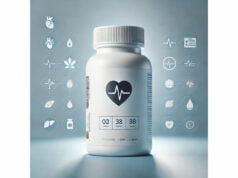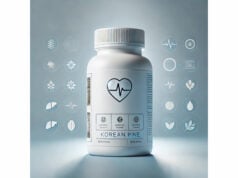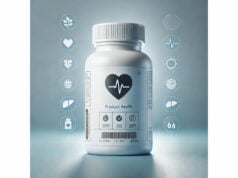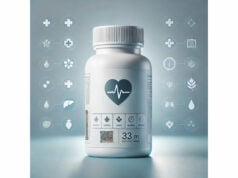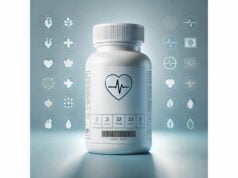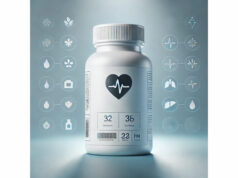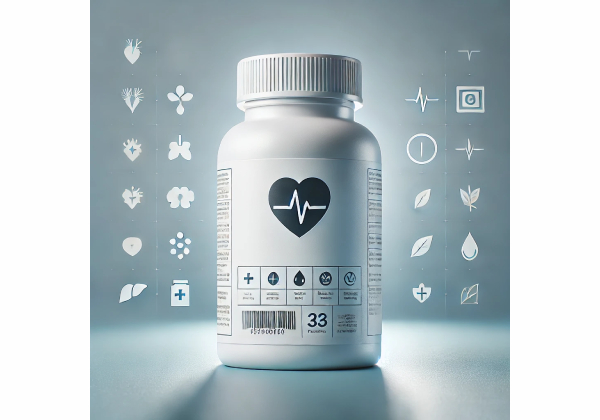
Konvomep is a prescription oral suspension that combines omeprazole—a proton pump inhibitor (PPI)—with sodium bicarbonate. Together, they reduce gastric acid quickly and maintain suppression for hours. Clinically, Konvomep is used in adults for short-term treatment of active benign gastric ulcers and to lower the risk of upper gastrointestinal bleeding in critically ill patients. Because it is an already-mixed liquid (after pharmacy reconstitution), it can be swallowed or delivered through nasogastric or orogastric tubes, which is useful when tablets or capsules are not an option. Beyond symptom relief, the goal is to let the stomach lining heal and to stabilize high-risk patients. Still, PPIs carry important risks—especially with prolonged use—and sodium bicarbonate adds a meaningful sodium load that not everyone should take. This guide translates the label into plain language: how Konvomep works, who benefits most, how to dose it correctly, how long to use it, what to avoid, and what side effects to watch for. Use it as a practical companion to a clinician’s advice.
Key Insights
- Reduces stomach acid fast (minutes) and maintains suppression to help ulcers heal.
- In ICU settings, reduces risk of stress-related upper GI bleeding when used short-term.
- Typical adult dose: 40 mg omeprazole once daily (ulcer) or 40 mg then 40 mg 6–8 hours later, then 40 mg daily (bleeding risk).
- Contains sodium; avoid or use cautiously with heart failure, severe kidney issues, or strict low-sodium diets.
- Do not use if allergic to PPIs or if taking rilpivirine; seek medical advice for long-term use beyond the prescribed course.
Table of Contents
- What is Konvomep and how it works
- Who benefits and when to use
- How to use and dose Konvomep
- What results to expect and when
- Common mistakes, interactions, and fixes
- Side effects and who should avoid
What is Konvomep and how it works
Konvomep is a ready-to-use oral suspension (after pharmacy reconstitution) that delivers two active components:
- Omeprazole (PPI): blocks the gastric H⁺/K⁺ ATPase (“proton pump”) in parietal cells. This is the final step in acid secretion, so inhibition sharply reduces both basal and stimulated acid output.
- Sodium bicarbonate (antacid and buffer): immediately neutralizes existing gastric acid and raises intragastric pH, protecting the acid-labile omeprazole from degradation and speeding its absorption in the small intestine.
This pairing gives Konvomep a two-phase effect. First, bicarbonate works within minutes to reduce acidity and protect the drug. Second, absorbed omeprazole sustains acid suppression for the dosing interval by shutting down proton pumps. In clinical use, that means rapid symptom relief plus durable protection of the gastric lining as it heals.
Form and administration flexibility set Konvomep apart: it’s supplied as a kit that your pharmacy mixes into a flavored liquid. Patients swallow it directly or receive it via nasogastric/orogastric tubes when oral tablets are not feasible. After mixing, the suspension is stored in the refrigerator and shaken well before each dose.
It’s important to understand what Konvomep is not. It is not a general-purpose over-the-counter PPI. Its approved uses are specific and time-limited in adults. For long-standing reflux symptoms or maintenance therapy, clinicians typically reassess choice of agent, dose, and duration. Finally, because Konvomep contains sodium and benzyl alcohol (as an excipient), it’s not automatically appropriate for every patient—medical history and concurrent medications matter.
Who benefits and when to use
Konvomep is indicated for two well-defined scenarios in adults:
- Active benign gastric ulcer (short-term): The aim is to heal the ulcer by reducing acid exposure. This often translates to improved pain and less risk of bleeding while the mucosa repairs. Treatment typically lasts 4 to 8 weeks, depending on the ulcer’s size, etiology (e.g., NSAID-related), and the patient’s response.
- Reduction of stress-related upper GI bleeding risk in critically ill adults: ICU patients with severe physiologic stress can develop erosions and ulcers. Short-course therapy with a PPI reduces clinically significant bleeding risk, particularly when risk factors (mechanical ventilation, coagulopathy) are present. Konvomep’s liquid form makes administration straightforward in patients with feeding tubes.
Who tends to benefit most?
- Patients who cannot swallow pills or require tube administration. The reconstituted liquid can be dosed reliably via NG/OG tubes.
- Those needing rapid pH elevation. The bicarbonate component raises gastric pH quickly while omeprazole ramps up.
- Ulcer patients needing a defined short course. Clear dosing and duration help avoid “set-and-forget” overuse.
When to think twice or choose alternatives
- Mild, intermittent heartburn without alarm features may not require a prescription PPI; lifestyle changes or OTC therapies might suffice.
- Long-term daily PPI use for unapproved indications should be avoided unless a clinician identifies a persistent, evidence-based need.
- Severe sodium restrictions (e.g., decompensated heart failure) or specific drug interactions (notably rilpivirine) are signals to select another regimen.
Special notes
- For suspected H. pylori–associated ulcers, Konvomep may be part of a broader antibiotic regimen, but the combination and duration should be tailored by a clinician.
- In NSAID users, pairing ulcer treatment with reassessment of NSAID need or gastroprotection strategy is essential.
The bottom line: Konvomep fits best when rapid acid control plus liquid delivery is needed for short, defined courses in adults—particularly ulcers and ICU bleeding risk reduction.
How to use and dose Konvomep
General principles
- Take on an empty stomach, ideally at least 1 hour before a meal.
- Shake the bottle well each time. Measure doses with a proper oral syringe or cup.
- If given through an NG/OG tube, stop enteral feeding ≥3 hours before and resume ≥1 hour after the dose; flush the tube before and after administration.
Adult dosing (based on the omeprazole content)
- Active benign gastric ulcer: 40 mg once daily for 4–8 weeks.
- Reduction of risk of upper GI bleeding in critically ill adults: 40 mg initially, 40 mg 6–8 hours later on Day 1, then 40 mg once daily for 14 days.
Strengths and concentration
After pharmacy reconstitution, Konvomep yields a fixed concentration suspension (per mL) containing omeprazole with sodium bicarbonate. Doses are drawn by volume to deliver the prescribed omeprazole milligrams. Your pharmacist will label the bottle with mL per dose and the discard date.
Timing, missed doses, and practical tips
- If you miss a dose, take it when remembered unless it’s close to the next dose. Don’t double up.
- Keep a daily schedule (same time each day) and set reminders; acid control is more consistent with regular dosing.
- Storage: Keep refrigerated within the specified temperature range. Discard after 30 days from reconstitution, even if liquid remains.
Drug forms you might see
Konvomep is supplied as a two-bottle kit—one with omeprazole powder and one with flavored diluent containing sodium bicarbonate. A pharmacist prepares the final volume (for example, 90 mL, 150 mL, or 300 mL) based on the prescribed course. Do not try to reconstitute it yourself at home unless explicitly instructed and trained.
When to call your clinician during therapy
- No improvement after 1–2 weeks of ulcer symptoms.
- New alarm signs: bloody or black stools, vomiting blood, persistent vomiting, unexplained weight loss, trouble swallowing, or severe abdominal pain.
- Adverse effects interfering with hydration or nutrition (e.g., persistent diarrhea or vomiting).
Do not change dose or extend therapy beyond the prescribed course without medical guidance; PPIs are powerful and should be used at the lowest effective dose for the shortest necessary duration.
What results to expect and when
Onset of relief
- Many people notice initial relief within minutes from the bicarbonate neutralization. That fast change comes from chemistry, not yet from the PPI’s pump blockade.
- Omeprazole’s full effect builds over several doses as more proton pumps are inhibited. Expect steadier symptom control within a few days of daily use.
Ulcer healing
- For typical benign gastric ulcers, 4–8 weeks of acid suppression is used to promote mucosal healing. Factors that influence healing speed include ulcer size, whether NSAIDs continue, smoking status, and presence of H. pylori. Your clinician may schedule follow-up or, in some cases, endoscopic checks.
ICU bleeding risk reduction
- In critically ill patients, the first 24 hours are crucial: the regimen uses an initial dose, a second dose 6–8 hours later, and then daily dosing for up to 14 days. The goal is prevention—avoiding a bleeding event rather than treating one. Effectiveness is judged clinically (no drop in hemoglobin without explanation, no overt bleeding) rather than by symptom relief.
If symptoms persist
- Persistent epigastric pain, early satiety, recurrent vomiting, or anemia despite therapy warrants reassessment. Possibilities include refractory ulcers, ongoing NSAID exposure, missed H. pylori infection, or non-ulcer causes of pain.
After the course ends
- Many patients can stop after the prescribed duration, especially when the precipitating factor (e.g., NSAID) is addressed. If symptoms recur, clinicians might consider step-down therapy, testing for H. pylori, or alternative diagnoses.
Quality-of-life tips while healing
- Eat smaller, earlier dinners; elevate the head of the bed if nighttime symptoms occur; avoid late alcohol and large high-fat meals; and continue physician-advised changes (e.g., stopping NSAIDs if possible). These support the medication’s effect and may reduce the need for extended PPI use.
Set expectations clearly: some relief can be fast, but healing takes weeks. Consistent dosing, risk-factor control, and follow-up make the biggest difference.
Common mistakes, interactions, and fixes
Frequent pitfalls
- Taking with food or right after a meal: reduces the intended pharmacodynamic profile. Aim for ≥1 hour before eating.
- Not shaking the suspension: can lead to under- or overdosing per mL. Shake well each time.
- Continuing enteral feeds during dosing: feeds can interfere; hold 3 hours before and 1 hour after for NG/OG administration.
- Using household spoons: they are inaccurate. Use a marked oral syringe or dosing cup.
- Extending therapy indefinitely: PPIs are not “maintenance vitamins.” Discuss duration and exit plans at the start.
Key drug interactions to know
- Do not use with rilpivirine (an HIV medicine): acid suppression markedly decreases its absorption.
- Clopidogrel: omeprazole can reduce formation of clopidogrel’s active metabolite; your clinician may choose a different antiplatelet strategy or alternative acid suppression.
- Methotrexate (especially high dose): PPI use has been associated with reduced clearance; oversight is needed.
- Digoxin and certain diuretics: higher risk of hypomagnesemia; monitoring may be appropriate.
- St. John’s wort or rifampin: can reduce PPI exposure through enzyme induction; avoid combining without medical advice.
- Antifungals (e.g., ketoconazole, itraconazole) and certain antivirals: require acidic pH for absorption; suppression may reduce efficacy. Your prescriber will time or select alternatives as needed.
Medical conditions that complicate use
- Strict low-sodium diets, heart failure, cirrhosis with ascites, advanced CKD: the sodium bicarbonate load may be problematic. Discuss sodium budgeting and alternatives.
- History of hypomagnesemia, osteoporosis, or prior fundic gland polyps: consider shortest duration possible and monitoring when indicated.
- Bartter’s syndrome or other acid-base disorders: bicarbonate can shift systemic pH; specialized oversight is needed.
If problems arise, simple fixes help
- Breakthrough symptoms: confirm empty-stomach dosing, avoid late-night heavy meals, review interacting drugs.
- Diarrhea or cramping: rule out C. difficile if severe or persistent; hydration matters.
- Rash or joint pains: rare autoimmune reactions (e.g., cutaneous or systemic lupus, severe skin reactions) require discontinuation and prompt care.
- B₁₂ concerns with prolonged use: discuss diet, duration minimization, and testing if clinically indicated.
Smart use is about getting the benefit quickly while avoiding chronic overuse. Bring your medication list to each appointment and ask specifically about interaction checks.
Side effects and who should avoid
Common side effects (usually mild and self-limited)
- Headache, abdominal pain, nausea, diarrhea, vomiting, or gas. These typically resolve as the body adjusts or when therapy ends.
Serious or notable risks (seek care if they occur)
- Clostridioides difficile–associated diarrhea: watery stools, fever, and abdominal pain that does not improve.
- Acute interstitial nephritis: decreased urination, blood in urine, swelling, fever.
- Hypomagnesemia (more likely with longer use or with digoxin/diuretics): tremors, muscle spasms, arrhythmias, seizures.
- Vitamin B₁₂ deficiency with prolonged therapy (typically >3 years).
- Bone fracture risk (hip, wrist, spine) with high-dose or long-term PPI use.
- Fundic gland polyps after long durations.
- Cutaneous or systemic lupus: new or worsening joint pain or rash that worsens with sun.
- Severe skin reactions: blistering, peeling, fever—requires emergency evaluation.
- Alkalosis or sodium overload–related effects from bicarbonate in sensitive patients: confusion, twitching, edema, weight gain.
Do not use Konvomep if
- You are allergic to omeprazole, any other PPI, or any component of the suspension.
- You are taking rilpivirine (alone or in combination products).
Use with caution or discuss alternatives if
- You have heart failure, severe kidney disease, cirrhosis/ascites, or are on a strict low-sodium diet.
- You have a history of low magnesium or osteoporosis.
- You are pregnant or breastfeeding: risk-benefit should be individualized.
- You use medicines with important pH-dependent absorption or narrow therapeutic index (see interactions).
Storage and safety
- Keep the reconstituted bottle refrigerated and tightly closed; discard after 30 days.
- Keep away from children; the flavored suspension may look appealing to them.
In short: most adults tolerate short-course therapy well, but recognize warning signs, know your sodium limits, and work with your clinician to keep use targeted and time-bound.
References
- KONVOMEP- omeprazole and sodium bicarbonate 2024.
- label 2022.
- Omeprazole and sodium bicarbonate (oral route) – Side effects & dosage – Mayo Clinic 2025.
- Konvomep: Package Insert / Prescribing Information 2024.
Disclaimer
This article is for general educational purposes and does not replace personalized medical advice, diagnosis, or treatment. Do not start, stop, or change any medication without guidance from a licensed healthcare professional who knows your medical history and current medications. If you have severe abdominal pain, vomiting blood, black stools, unexplained weight loss, or trouble swallowing, seek urgent care.
If you found this guide helpful, please consider sharing it on Facebook, X (formerly Twitter), or your favorite platform, and follow us for future updates. Your support helps us continue creating reliable, people-first health content.

